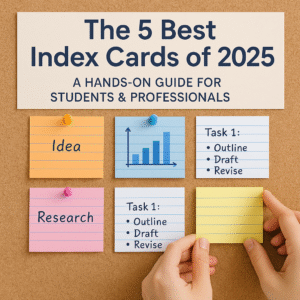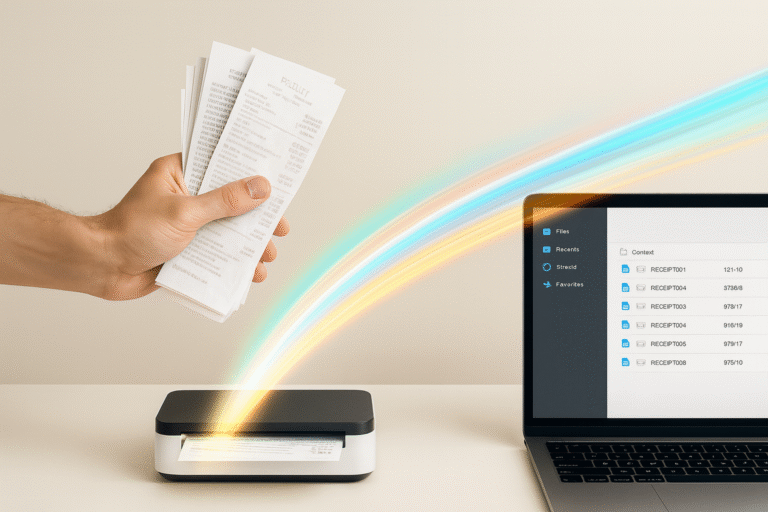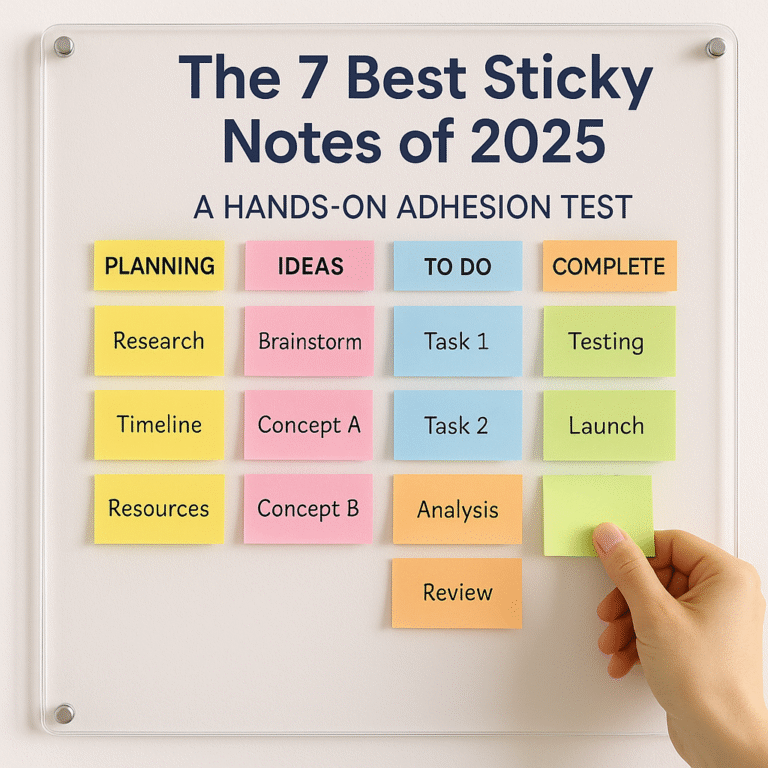The 5 Best Index Cards of 2025: A Hands-On Guide for Students & Professionals
In an age of endless apps and notifications, the simple index card remains a powerful, distraction-free tool for learning, organizing, and planning. Its brilliance lies in its constraints: a finite space for a single, focused idea. But as anyone who has handled a flimsy, ink-blotting card knows, quality matters. To separate the truly useful from the useless, I gathered the top contenders and put them through their paces.
This guide is the result of rigorous hands-on testing, focusing on the tactile qualities that define a great index card: paper weight, rigidity, ink handling, and durability. Whether you’re a student building the ultimate flashcard deck, a speaker outlining a presentation, or a home cook organizing recipes, this review will help you find the perfect card for the task.
Top Picks at a Glance
| Product | Category | Key Feature | Price |
|---|---|---|---|
 Oxford Ruled Index Cards
Oxford Ruled Index Cards
|
Best Overall | Classic design, consistent quality | Check on Amazon |
 Amazon Basics Heavy Weight
Amazon Basics Heavy Weight
|
Best Heavyweight | Thick, durable cardstock at a great price | Check on Amazon |
 Oxford Blank Color Cards
Oxford Blank Color Cards
|
Best for Color-Coding | Vibrant colors for visual organization | Check on Amazon |
 Rite in the Rain Cards
Rite in the Rain Cards
|
Most Durable | Weatherproof and tear-resistant | Check on Amazon |
The Anatomy of a Great Index Card
While seemingly basic, the utility of an index card is determined by its physical characteristics. Here’s what I focused on during my evaluation:
- Paper Weight & Rigidity: This is the most important factor. Measured in pounds (lb), a higher weight means a thicker, more durable card. A good card should feel substantial and “snap” when flicked, not feel flimsy like paper. This is crucial for flashcards and any application requiring frequent handling.
- Ruling Type: The classic is college-ruled, but blank cards are essential for mind maps and diagrams, while grid-ruled cards are perfect for math, design, or structured notes.
- Paper Finish: A card’s surface affects how it takes ink. A slightly matte, toothy finish is ideal, grabbing ink smoothly without causing it to feather or bleed. Overly glossy surfaces can cause smearing with certain pens.
- Consistency: A great pack of index cards has consistent cuts, uniform ruling, and reliable quality from the first card to the last.
The 5 Best Index Cards Reviewed in Detail

1. Oxford Ruled Index Cards, 3″ x 5″
Best Overall & The Everyday ClassicOxford is to index cards what Kleenex is to tissues. This is the classic, reliable standard that you’ll find in offices and schools everywhere. They represent the perfect balance of quality, affordability, and performance for the vast majority of tasks, from jotting down phone numbers to creating study aids.
My Hands-On Experience: The first thing I noticed is the consistency. Every card is perfectly cut with crisp, clear blue lines and a red header line. The paper weight is standard but has a satisfying stiffness; it passes the “flick” test with a decent snap. I tested it with a variety of pens. A ballpoint glides smoothly, and my favorite Pilot G2 gel pen wrote cleanly with minimal “ghosting” (where you can see the writing from the back). A heavy Sharpie marker did bleed through, which is expected for this weight. For everyday use, these are the dependable workhorse you can trust.
What I Liked
- Consistently high-quality manufacturing.
- Crisp, clear ruling for neat notes.
- Good balance of stiffness and affordability.
- Works well with most common pens (ballpoint and gel).
- Made from 10% recycled fiber.
What Could Be Better
- Not heavy enough to prevent bleed-through from markers.
- Can show wear and tear with very heavy handling.

2. Amazon Basics Heavy Weight Ruled Index Cards, 4″ x 6″
Best Heavyweight Card for Durability & ValueFor flashcards that will be handled constantly, presentation notes, or recipe cards meant to last, a heavyweight card is a must. The Amazon Basics heavyweight option delivers impressive thickness and durability at a very competitive price point, making it a fantastic value.
My Hands-On Experience: These cards feel immediately more substantial than the standard Oxford cards. They are rigid, with very little flex, and the corners feel robust enough to stand up to shuffling and repeated use. The extra thickness makes a huge difference in ink handling. My Sharpie marker, which bled through the Oxford cards, was completely stopped by this cardstock—there was zero bleed-through, only minor ghosting. The larger 4×6 size also provides significantly more writing space, which I found ideal for more detailed notes and diagrams. This is my top pick for serious students creating flashcard systems.
What I Liked
- Thick, heavyweight cardstock is extremely durable.
- Excellent resistance to ink bleed-through.
- Larger 4×6 size offers more room for notes.
- Incredible value for a heavyweight card.
What Could Be Better
- Ruling can occasionally be slightly less consistent than Oxford’s.
- Bulkier to carry around than 3×5 cards.

3. Oxford Blank Index Cards, Assorted Colors
Visual Organization & Color-CodingVisual cues are a powerful organizational tool. Assigning different colors to different subjects, project categories, or themes can make information retrieval instant. This pack from Oxford provides their standard, reliable card quality in a range of vibrant colors, combined with a blank canvas for ultimate flexibility.
My Hands-On Experience: The colors are bright and distinct, perfect for separating my work projects (blue) from personal tasks (green). Being blank, they were fantastic for mind-mapping and sketching out ideas without the constraint of lines. The cardstock is the same reliable quality as the standard white Oxford cards. Writing on the colored surface was easy, though I found that a bold black pen provided the best contrast. For anyone using a system like GTD (Getting Things Done) or creating a complex study guide, these color-coded cards are an indispensable organizational aid.
What I Liked
- Vibrant, distinct colors aid in organization.
- Blank format offers maximum flexibility for notes and drawings.
- Same reliable quality as standard Oxford cards.
- Great for creative projects and complex filing systems.
What Could Be Better
- Ink colors other than black can be harder to read on some card colors.

4. Rite in the Rain Weatherproof Index Cards
Ultimate Durability & Outdoor UseFor those who need their notes to survive harsh conditions, Rite in the Rain is the undisputed champion. These aren’t just thick cards; they’re made of a special, patented substrate that sheds water, grease, and mud. They are the choice of field researchers, contractors, and outdoor adventurers for a reason.
My Hands-On Experience: I took a card and wrote on it with the recommended all-weather pen and a standard pencil. Then, I ran it under the kitchen sink. The water rolled right off, and the writing remained perfectly intact, with no smudging. The paper didn’t warp or disintegrate. I even tried to tear it, and it stretched before tearing, demonstrating incredible durability. The texture is unique—waxy and smooth. While they are a specialty item at a premium price, their performance is genuinely incredible. If you need notes that absolutely cannot fail, these are the ones to get.
What I Liked
- Completely waterproof and weatherproof.
- Resists tearing, grease, and dirt.
- Incredibly durable for long-term use in harsh environments.
- Works with a standard pencil or all-weather pen.
What Could Be Better
- Significantly more expensive than standard cards.
- Specialized surface doesn’t work well with gel or water-based pens.

5. Oxford Graph Ruled Index Cards
Diagrams, Math, & Structured NotesA simple line ruling doesn’t work for everyone. For designers sketching interfaces, students solving equations, or planners creating layouts, a grid ruling is essential. This option from Oxford Graph provides a quality graph-paper experience in a durable index card format.
My Hands-On Experience: The grid lines are printed clearly and aren’t too dark, providing a perfect guide without overpowering the content written on top. The grid was invaluable for sketching out a simple floor plan and for practicing chemistry equations, keeping everything perfectly aligned. The cardstock is a good medium weight, slightly heavier than the standard Oxford, offering decent rigidity and preventing most pens from bleeding through. For anyone whose notes are more visual than text-based, these grid cards are a must-have tool.
What I Liked
- Grid ruling is perfect for non-linear notes and drawings.
- Good quality, medium-weight cardstock.
- Resists ink bleed-through well.
- Great value for a specialty-ruled card.
What Could Be Better
- The brand is less established than Oxford.
- Grid may feel too busy for purely text-based notes.
How We Tested to Find the Best Index Cards
An index card’s value is in its physical quality. To provide a reliable review, we went hands-on and conducted several key tests on each brand:
- The Rigidity Test: We held each card by its corner and gave it a firm flick to test its stiffness and “snap.” Flimsy cards that flopped failed, while rigid cards that produced a crisp sound scored highly.
- The Writing Test: We wrote on each card with four different instruments: a Bic ballpoint pen, a Pilot G2 gel pen, a Pilot fountain pen, and a Sharpie permanent marker. We checked for feathering (ink spreading into the fibers), ghosting (visibility on the reverse side), and bleed-through.
- The Durability Test: We shuffled a stack of each card brand 20 times to simulate the heavy use of a flashcard deck. We then inspected the corners and edges for fraying, bending, and wear.
Frequently Asked Questions
Are index cards actually effective for studying?
Yes, extremely. They are a primary tool for a learning technique called “active recall,” where you force your brain to retrieve information rather than passively reading it. This process creates stronger neural connections and dramatically improves memory retention. They are the foundation of proven methods like the Leitner system.
What’s the difference between 3×5 and 4×6 inch index cards?
The 3×5 inch card is the classic size, perfect for portability, quick notes, and single facts or vocabulary words. The 4×6 inch card offers 60% more surface area, making it much better for more detailed notes, complex diagrams, short recipes, or presentation outlines where more information is needed on a single card.
What is a good paper weight for index cards?
Standard index cards are typically made from 7-point or 9-point stock, which is roughly equivalent to 90 lb cardstock. For heavy-duty use like flashcards, look for heavyweight options, which are often 11-point or around 110-140 lb cardstock. These offer superior durability and prevent ink from showing through.
Final Verdict: The Right Card for the Right Job
The humble index card is far from obsolete; it’s a focused tool for a distracted world. For sheer reliability and classic performance, the Oxford Ruled Index Cards remain the Best Overall choice. They are the proven, dependable standard for a reason.
However, if your work demands durability and you’re tired of ink bleed-through, upgrading to the Amazon Basics Heavy Weight cards is the single best decision you can make. The difference in quality and longevity is palpable, making them our top recommendation for serious students and professionals.
By choosing the card that matches your specific needs—be it rigidity, ruling, or color—you’re not just buying paper; you’re investing in a more effective system for learning, creating, and organizing your best ideas.
-
How Inexperience Causes Massive Losses in the Forex Markets
Read More -
What Types of Marketing Are There? The Ultimate 2025 Guide
Read More -
Elements of a Decision Situation: A Comprehensive Analysis
Read More -
How to Build a Powerful Marketing Strategy
Read More -
The Ultimate Guide to Understanding the “Consumer”
Read More -
Online Reputation Management: Protecting Your Brand
Read More -
How Can I Invest In The Share Market?
Read More -
Is The Share Market Halal?
Read More -
The 7 Best Smart Notebooks of 2025: A Hands-On Review
Read More -
The 7 Best Sticky Notes of 2025: A Hands-On Adhesion Test
Read More -
The 5 Best Index Cards of 2025: A Hands-On Guide
Read More -
The 5 Best Quick Scanners: Tested for Speed & Simplicity
Read More




